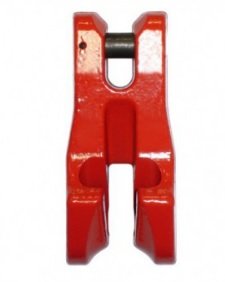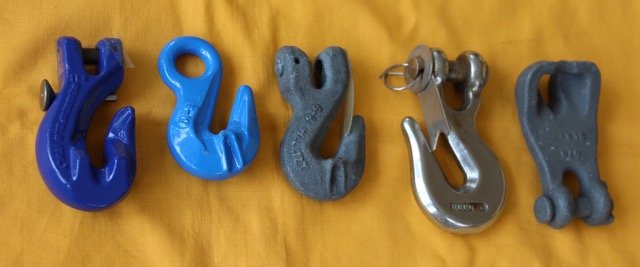Bobc
Well-Known Member
Get most of the scope in, and then drive over the anchor to break it out.
Well, that'll certainly break something.Get most of the scope in, and then drive over the anchor to break it out.
That's a rather distant anchorage that the well-polished 'Sumara of Weymouth' has found....I use this handy notched plate on the aft of my Sampson post. When the chain goes slack I just drop the chain into the notch so that as the boat raises with the next wave it hauls hard on the chain. The boat does most of the work. I find it works well.
A word of warning from experience. The line should not be able to pass through the windlass. In the event that all the chain runs out, including the rope, it is an extremely difficult task to recover it, especially in deep water. This happened to me when the windlass clutch decided to loosen and let go. All 65 metres of chain plus the anchor hung straight down, in quite choppy conditions. It took us more than an hour to recover it using the genoa winches.I or trying to recover the anchor, I would buoy the chain, cut the line attaching it to the boat (which should be long enough to allow of cutting it on the foredeck) and let it all go.
Yes that specific one has had a lot of abuse and worked well, did not deform itself nor deformed the chain link (actually the chain deformed elsewhere).That design of hook seems to be strong enough for most jobs.

I've always assumed that that was standard practice.A word of warning from experience. The line should not be able to pass through the windlass. In the event that all the chain runs out, including the rope, it is an extremely difficult task to recover it, especially in deep water. This happened to me when the windlass clutch decided to loosen and let go. All 65 metres of chain plus the anchor hung straight down, in quite choppy conditions. It took us more than an hour to recover it using the genoa winches.
My bitter end line is now short, finishing inside the anchor locker
I don't mean to pull all the chain up until it starts snatching, just most of it, so when it breaks out it doesn't reset. If worried about the load on the bow roller, put a hook snubber onto a cleat or something. Driving round in circles usually works too.Well, that'll certainly break something.
Running around in circles usually doesn't.........If worried about the load on the bow roller, put a hook snubber onto a cleat or something. Driving round in circles usually works too.


The naval officer's motto :Running around in circles usually doesn't....
I am not aware of any standard on the subject although it may be in some books. My post was to advise those who have not had the benefit of years of experience.I've always assumed that that was standard practice.
Yes, that could be awkward.A word of warning from experience. The line should not be able to pass through the windlass. In the event that all the chain runs out, including the rope, it is an extremely difficult task to recover it, especially in deep water. This happened to me when the windlass clutch decided to loosen and let go. All 65 metres of chain plus the anchor hung straight down, in quite choppy conditions. It took us more than an hour to recover it using the genoa winches.
My bitter end line is now short, finishing inside the anchor locker
Do you recognize it!That's a rather distant anchorage that the well-polished 'Sumara of Weymouth' has found....
That works.Is there not a technique for sailing an anchor out of a mooring by tacking ( or letting the boat tack itself) & just recovering slack rode as required? The side pull of the craft working the anchor in the process so that the problems above are reduced.
Or am I on a different tack?
That suggests you were into 'bouldering' and not 'big wall' ascents.I've never had forces great enough to worry me. I have used as much as 50 feet of nylon.